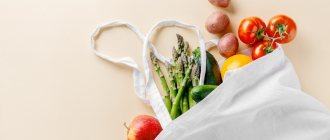17.02.2021 09:00
14641
Diabetes mellitus is a serious disease characterized by improper functioning of the pancreas. If you don't follow a strict diet and don't monitor your blood sugar, you can fall into a coma and even die.
Diabetes mellitus is a serious disease characterized by improper functioning of the pancreas. If you don't follow a strict diet and don't monitor your blood sugar, you can fall into a coma and even die. That is why the daily menu of a diabetic should be as balanced as possible and include only “safe” foods. Is rice included in this list? This article will tell you.
How to choose a safe type of rice for diabetes?
In diabetes, the pancreas stops producing enough insulin, which is why a person's blood glucose level is constantly elevated. That is why, when selecting nutrition, you should pay attention to the glycemic index of foods, which directly affects this aspect (glucose level). It is designated by the abbreviation “GI” and is placed on the packaging. Today there is the following classification of products according to their GI:
- 55 or less. This is a reduced figure;
- from 56 to 70. Average level;
- from 71 and more. High GI.
People suffering from diabetes should choose foods with a minimum GI, but sometimes it is allowed to introduce grains of the second group (medium GI level) into the diet. Diabetics should absolutely not eat rice with a high GI, otherwise the amount of glucose in the blood may sharply increase.
Next, let's look at the glycemic index of different types of rice cereals.
Gestational diabetes mellitus in pregnant women
Prenatal monitoring program for pregnant women with gestational diabetes mellitus by an endocrinologist:
- Monitoring a pregnant woman’s nutrition using a self-control diary;
- Assessment of glycemic self-control indicators: Target fasting glycemic level <5.1 mmol/l, before meals <5.8 mmol/l, 1 hour after meals <7.0 mmol/l, 2 hours after meals <6.7 mmol /l;
- Self-monitoring of ketonuria daily in the morning urine;
- Control of physical activity;
- From the 32nd week of pregnancy, ultrasound of the fetus (fetal growth dynamics, size and estimated weight in percentiles) every 2 weeks;
- CTG weekly;
- Consultation with an endocrinologist every 7-14 days;
- If necessary, consultation and supervision of related specialists.
Childbirth with gestational diabetes mellitus
Childbirth according to obstetric indications in a general maternity hospital during a full-term pregnancy.
The type of delivery will depend on the period at which labor begins, the expected weight of the fetus, and the state of health of the pregnant woman and the fetus.
The timing and method of delivery are determined by an obstetrician-gynecologist, based primarily on the well-being of the mother and fetus before birth, as well as the opinions of specialists (endocrinologist, ophthalmologist, therapist and others).
Until delivery, the usual glucose-lowering therapy is maintained.
- Insulin is discontinued;
- In the perinatal period, avoid infusions of solutions containing glucose and lactate;
- Target glycemic level 4.0 – 6.1 mmol/l;
- Glycemic control in a newborn: immediately after birth in umbilical cord blood, whole capillary blood, after 2, 24, 72 hours in whole capillary blood.
In pregnant women with gestational diabetes mellitus, after delivery and expulsion of the placenta, hormones return to normal levels, and, consequently, cell sensitivity to insulin is restored, which leads to normalization of carbohydrate metabolism. However, women with gestational diabetes remain at high risk of developing diabetes in the future.
Therefore, all women with gestational diabetes mellitus undergo an oral glucose tolerance test 4-8 weeks after birth (“load test” with 75 g of glucose - a study of venous plasma glycemia on an empty stomach and 2 hours after exercise), in order to reclassify the condition and actively identify disorders on the part of carbohydrate metabolism.
- If fasting venous plasma glycemia is detected ≥5.6 mmol/l, or 2 hours after exercise ≥7.8 mmol/l, consult an endocrinologist at the place of residence;
- If fasting venous plasma glycemia <5.6 mmol/l, and 2 hours after exercise <7.8 mmol/l, study fasting venous plasma glycemia every 3 years;
- All women who have had gestational diabetes mellitus are recommended to change their lifestyle (diet and physical activity) in order to maintain normal body weight and plan subsequent pregnancies.
Brown rice
This type of rice cereal is a real storehouse of micro- and macroelements necessary for the body. Brown rice is considered the healthiest of all varieties. It contains B vitamins, iron, iodine, magnesium, phosphorus, zinc and other beneficial substances. Brown rice helps remove waste and toxins from the body, improves the functioning of the gastrointestinal tract, and reduces cholesterol and glucose levels in the blood. Its GI is only 50-60 points, which means that people with diabetes can eat this cereal. Brown rice is usually used to prepare savory dishes (pilaf) or a side dish.
Useful qualities and chemical composition
There are more than one and a half dozen varieties of rice. The cereal crop is widely used in the traditional cooking of many nations, from Asia to Europe. The uniqueness of rice cereal is that the less it is processed, the more beneficial properties it retains.
Rice grains contain almost half of the B vitamins, which are specifically prescribed for diabetics to maintain health:
- B1 thiamine – stimulates blood circulation;
- B2 riboflavin – helps normalize metabolism;
- B3 niacin – participates in the regulation of cardiovascular activity;
- B6 pyridoxine – strengthens nerve fibers;
- B9 folic acid – activates tissue regeneration.
Minerals in the composition
| Microelements | Macronutrients |
| zinc, manganese, iron, fluorine, boron, copper, selenium, etc. | silicon, potassium, phosphorus, magnesium, sulfur, magnesium, calcium, manganese |
Rice contains nonessential and essential amino acids (arginine, valine, leucine, aspartic and glutamic acid and others). The cereal also contains monounsaturated fatty acids palmitoleic and oleic (omega-9), polyunsaturated fatty acids: linoleic, linolenic, Omega-3 and 6.
Important! Unlike many other cereals, rice does not contain gluten, so the product does not cause allergic reactions.
Diseases for which rice cereal is recommended by doctors:
- Bronchitis and bronchial asthma. Cereals help cleanse the bronchopulmonary system of phlegm.
- Diseases of the renal apparatus. The cereal has diuretic properties.
- Chronic diseases of the gastrointestinal tract (gastrointestinal tract). Rice is able to strengthen the intestinal walls and heal erosive lesions of the mucous membrane.
- Intoxication and diarrhea. The product is a natural adsorbent.
Eating rice dishes is useful for neuropsychological disorders.
Brown rice
The chemical composition of this grain is almost similar to brown rice. Additionally, it contains folic acid, which is very beneficial for women's health. The GI of brown rice is 40-45 units, so it can also be included in the diet of diabetics. It should be remembered that this type of cereal has a rather coarse structure, so it needs to be cooked longer than the usual white rice. It is better to pre-soak brown rice for 4 hours, and only then subject it to heat treatment. It should be noted that this type of rice has a low calorie content - only 111 kcal per 100-gram serving. For comparison: a similar volume of white rice contains 135 kcal.
Brown rice can be served as a side dish for meat or vegetable dishes, or made into pilaf or unsweetened porridge. The main disadvantages of this type of group are its short shelf life and high price.
Additional Information
Just 10 years ago, eating rice, which forms the basis of the diet of half the world's population, was not considered hazardous to health.
But in 2012, scientists at Harvard University published the results of a study saying otherwise. It turned out that uncontrolled consumption of cereal provokes the development of type 2 diabetes. At last count, 10% of the world's population suffers from the disease. Due to the fact that the body cannot independently control sugar levels, the patient must be conscientious, adhering to the recommended diet, and in the case of a complicated form of the disease, use medications.
Endocrinologists prohibit diabetics from eating only white polished rice. All other varieties of cereal can be eaten, and sometimes this even significantly helps in treating the disease. Like other foods, you cannot introduce grain into your diet in unlimited quantities.
Information about eating rice for sugar problems is general in nature. The individual characteristics of the body to absorb the product and the advisability of its introduction into the diet of a diabetic should be determined by the attending physician.
Black rice
It is also called wild or royal. The reason is simple - several centuries ago, this type of rice cereal was served only in rich houses. Wild rice is a true leader in protein content. It also has a pleasant nutty flavor. Black rice has a low GI of 45-50, so it can be eaten by diabetics. It is also rich in vitamins and microelements: magnesium, iron, phosphorus, vitamin E, etc. Another pleasant bonus is the low calorie content of the cereal - 105 Kcal per 100 grams.
Royal rice improves the functioning of the gastrointestinal tract and saturates the body with essential substances. However, it is quite expensive and takes a very long time to prepare (about 60 minutes). Before you begin heat treatment of cereals, you should soak them in cold water overnight.
Frequently asked questions to the doctor
Healthy eating
Good afternoon The other day I read on the Internet, American scientists found out that white rice causes diabetes. This is true?
Hello! White rice contains a large amount of carbohydrates. With moderate consumption there will be nothing terrible, but it is better not to get carried away with it.
Unfamiliar product
Good afternoon My son brought me wild rice from Thailand and says that you should eat it if you have diabetes. But I doubt it. It looks kind of scary, the grains are black. What do you think?
Hello! Have no doubt, your son has brought you a good gift. For diabetes mellitus, wild rice is very useful. You can find detailed instructions for using the product and recipes in our article.
Parboiled rice
This type of rice has a pleasant golden hue as it is steamed. The product contains microelements that have a beneficial effect on the functioning of the heart and nervous system of the body. The GI of steamed rice is 50, so cereals can be included in the menu for people with diabetes. It is also distinguished by its low cost and minimal calorie content - 97 Kcal per 100 grams. Rice of this variety will help normalize blood sugar and lose extra pounds.
Red rice
Rice cereal has this color due to its anthocyanin content. This is a very beneficial substance for the body, which has an anti-age effect and reduces the risk of developing cancerous tumors in the breast and intestines. In addition, cereal normalizes blood pressure, improves heart function, and promotes weight loss. Red rice has a low GI level (46-50), so it can be included in a therapeutic diet. 100 grams of the finished product contains only 11 kcal.
This type of rice is usually sold as a side dish for vegetable or meat dishes. The main disadvantage of the variety is its high price.
In conclusion, we note that the information presented in this article is for informational purposes only. Before introducing any product into your diet, you should consult your doctor.
Examples of diabetic dishes with rice cereals
Rice can be used as a side dish, as a main dish, added to fish and chicken soup, or as a filling for pies. You can prepare desserts from rice (pudding, casserole). Not all known methods of using rice cereal in cooking are suitable for a diabetic menu. If you have diabetes, it is better not to combine rice with dough products, eggs, or pears.
Chinese cabbage rolls with brown rice
Chicken breast fillet is used as a meat ingredient for cabbage rolls. To prepare you need:
- 1 breast (about 300 gr.);
- medium fork of Chinese cabbage;
- 1 raw carrot and 1 onion
- 100 gr. brown cereal (cooked al dente);
- two tablespoons of 10% sour cream;
- salt, spices, fresh herbs.
Pass the chicken fillet and half the onion through a meat grinder. Add finely chopped herbs, salt and spices. Knead the minced meat well. Add cooked brown rice and stir. Cut the stalk from the cabbage and carefully remove the thickenings on the leaves with a knife. Simmer (blanch) cabbage leaves in boiling water for 1–2 minutes.
Remove the cabbage from the boiling water, spread out the leaves and cool. Place a tablespoon of minced meat on the edge of the sheet and wrap it in an envelope. Place the cabbage roll in a saucepan or slow cooker. Add grated carrots and the second half of chopped onion. Dilute sour cream with 200 ml of water, add salt, pour over cabbage rolls and simmer for 40 minutes. Before serving, sprinkle with chopped herbs.
Rice soup
You can use chicken drumsticks for the broth base. For two liters of soup you will need:
- 2 drumsticks (first remove the skin and boil);
- onions and carrots - one piece each;
- green pepper – ½ piece;
- brown or red rice – 30–40 g;
- frozen broccoli – 1 package (400 gr.);
- salt, pepper (peas), bay leaf.
You can replace broccoli with cauliflower or make a soup from two types of vegetables.
Pour the washed cereal into the prepared broth, bring to a boil and cook for 15–20 minutes. Add grated carrots, finely chopped onion and pepper. Boil for five minutes. Add salt, peppercorns, bay leaf. Cut the broccoli into florets and add to the soup. Cook until done.
Salad with black rice
Sort the grains and rinse thoroughly several times. Pour in cold water and let sit for several hours. This will speed up the cooking process. Cook the rice al dente. Products for salad:
- 100 gr. ready-made cereals;
- ½ small head of iceberg lettuce;
- 2 tomatoes;
- one small red onion;
- 1 medium sized carrot;
- 1 small avocado.
Cut the tomato, avocado and onion into cubes, grate the carrots on a coarse grater, and carefully chop the salad. Mix vegetables, add black boiled cereal. Pour in the dressing and let the salad sit for a quarter of an hour. Proportions of products for dressing:
- cold-pressed olive oil – 50 ml;
- soy sauce – 2.5 tbsp. spoons;
- garlic – 2 cloves (squeeze through a press);
- juice of ½ lemon;
- mixture of peppers - to taste.
There is no need to add salt to the recommended salad dressing.











